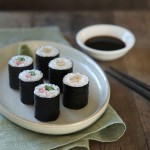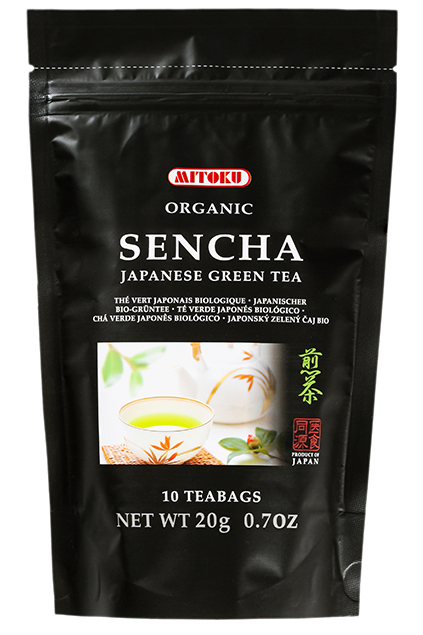
Organic Sencha
Sencha is the most widely available variety of Japanese green tea. It has a beautiful emerald color and a delicate balance of sweetness, umami, and bitterness. When enjoyed hot, sencha relaxes and invigorates, while cold sencha is wonderfully refreshing in summer.
After being harvested in spring, sencha undergoes a steaming process to minimize oxidization, preserving the leaf while keeping it close to its fresh state. Analysis has revealed that this sort of steaming destroys most of the oxidative enzymes in tea. This is what allows sencha to remain brilliant green in color, and to retain its natural vitamin content, high concentration of polyphenols, and abundance of amino acids.
The history of our tea maker

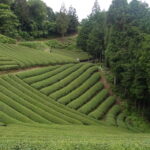
The Uji area of Kyoto is considered to be the oldest center of tea production in Japan. Tea from this region is so celebrated that “Uji Tea” is considered a synonym for quality. Aijiro Nagata, the founder of Mitoku’s tea supplier, was born and raised here. He grew up working in the tea business, starting in early childhood, and his unwavering passion for tea is what created the organic Japanese green tea sold by Mitoku today.Show more...
Organic green tea blends
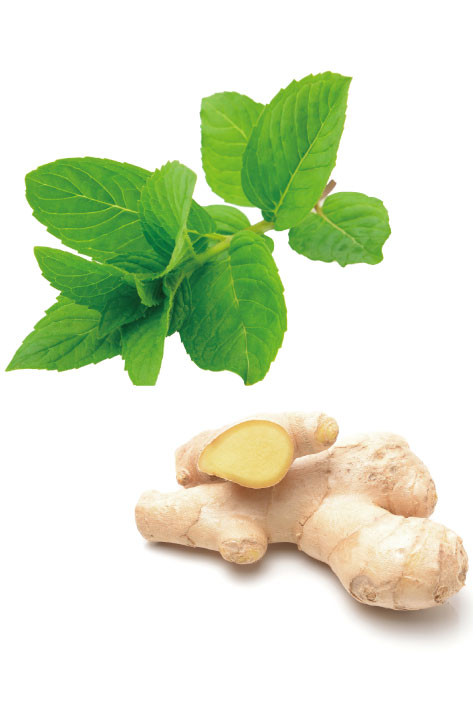
Mitoku’s organic green tea also tastes great when blended with mint, ginger, and other ingredients. Our expert tea producers are unrivaled in combining smooth and refreshing Japanese sencha with complementary flavors. All blends are prepared and packed on our producer’s estate to ensure quality and freshness.
 The production of Japanese green tea is generally divided into three stages. The process begins, of course, in the fields with the cultivation of the tea leaf itself. The next stage involves processing, such as steaming, required to make crude, unrefined tea. In the final stage, the crude tea is sorted and blended to create the end product.
The production of Japanese green tea is generally divided into three stages. The process begins, of course, in the fields with the cultivation of the tea leaf itself. The next stage involves processing, such as steaming, required to make crude, unrefined tea. In the final stage, the crude tea is sorted and blended to create the end product.
Japanese green tea is the fruit of hard labor. Like any other crop, nutritious soil is essential for good growth. Organically grown tea, in particular, requires the utmost care and attention, since only specially prepared organic compost containing no artificial chemicals can be used to generate a healthy, wholesome crop.
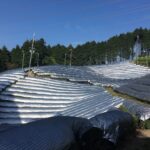
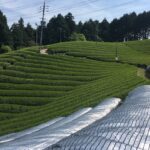 To produce certain kinds of steamed green tea such as gyokuro or matcha, the fields are covered completely with cloth prior before the harvest, shading the leaves from the sunlight to obtain a better taste and more vivid color. Care must be taken to ensure that the leaves are not damaged during this delicate process. Japan has four distinct seasons, meaning that the harvest period is strictly limited. The timing of the harvest will affect the quality of the resulting tea, with the highest grades being picked in early May.
To produce certain kinds of steamed green tea such as gyokuro or matcha, the fields are covered completely with cloth prior before the harvest, shading the leaves from the sunlight to obtain a better taste and more vivid color. Care must be taken to ensure that the leaves are not damaged during this delicate process. Japan has four distinct seasons, meaning that the harvest period is strictly limited. The timing of the harvest will affect the quality of the resulting tea, with the highest grades being picked in early May.
After the harvest comes the steaming process, which is unique to Japanese tea. While most other green teas are pan-fried to halt oxidation, the steaming process used to make sencha allows the leaves to retain most of their natural nutritional value. This critical stage will determine the quality of the resulting tea in terms of color, aroma, and flavor. The steamed leaves are then cooled, rolled, and dried to reduce moisture content and help the tea withstand storage. The tea at this stage is referred to as aracha, meaning crude or unrefined tea.
There was a time when all tea in Japan was hand rolled by skilled experts. Today, however, most tea is machine-processed. Although the original temomi (hand rolling) techniques provide the foundation for this modern tea-making technology, no machine can surpass the delicate skill of veteran, artisan tea makers using age-old, refined techniques. This is the quality that Mitoku’s tea makers are aiming for.
In the final stage of processing, the crude tea is generally sieved and cut, the leaves sorted by color and shape, and then dried further to enhance aroma and flavor. The next stage is one of the most critical: the blending. Here, expert tea blenders create subtle and bespoke blends through a careful selection process. The resulting teas are rich with subtle aroma and delicate yet distinct flavor.
To make a perfect cup of Japanese tea, the most important points are the water used, the temperature of the water, the ratio of tea leaves to water, and the steeping time. Where possible, soft water should be used. If only hard water is available, leaving the water overnight can help to reduce the smell of chlorine that can be characteristic of hard water.
Water should then be boiled and poured over tea leaves, then left to steep. The hotter the water, the greater the volume of catechin – a type of antioxidant—released into the tea, resulting in a rich intensity of active ingredients and a more pronounced bitterness to the tea. The cooler the water, the greater the volume of amino acids in the resulting tea, and the more pronounced the umami taste. Higher grade teas are best prepared using warm, rather than piping hot, water. Water that is too hot may mask the delicate taste of green tea. Equally, steeping the leaves for too long can leave tea dark and bitter. Chilled green teas are becoming increasingly popular too as they make for a refreshing cool summer beverage with a touch of astringency.
Sencha leaves may be reused once or twice. Fresh leaves should not be added to used ones – discard spent leaves, rinse the pot, and begin fresh.
Loose tea
Makes 2 cups (300ml)
- Pour boiling water into the tea cups and leave it to cool down to 70-90°C.
- Place 1 tsp (5g) Sencha tea leaves in a teapot.
- Pour hot water (70-90°C) over the tea leaves. Steep for about 1-2 minutes, then serve.
Teabag
- Pour hot water at 70-90°C over a teabag in a mug or cup
- Steep for 1-2 minutes; do not leave any longer, and serve warmed



